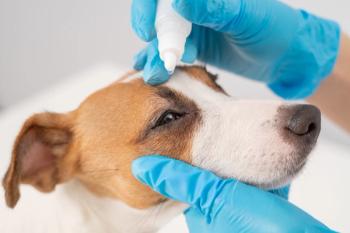
Is Your Practice Disaster Ready?
September was National Preparedness Month, and a chance to remind us all that if we take time to ready ourselves—now and throughout the year—for the types of emergencies that could affect us where we live, we could have much better outcomes.
September was National Preparedness Month (NPM), and a chance to remind us all that if we take time to ready ourselves—now and throughout the year—for the types of emergencies that could affect us where we live, we could have much better outcomes.
Captivating as they are, tales of someone taking serious risks to rescue pets don’t always have happy endings. Many of us have our own stories of caring veterinary professionals who refused to leave or went back to an animal hospital in dangerous conditions to safeguard the patients. Why disregard safety? There is a wide variety of reasons that professionals might choose to do this, including: they weren’t sure that everything was being done for the animals; they didn’t know who else could get there; or they weren’t aware of who was doing what. However, there’s no reason to take heedless risks if you take a good look at your hospital and make plans beforehand for personnel, patients, and boarders in preparation of potential disasters. Veterinary professionals should already know the disasters that are most likely to occur in their region—be it flooding, power outages, high winds, fires, among other disasters—but, to get you started on how to prepare your practice in the event of a disaster, we adapted the basic
1. Command and control:
- Who will be responsible for activating, coordinating, implementing, and terminating your plan? Choose someone and then have a back-up. Staff should know who is in charge and that only instructions coming from those individuals should be followed.
2. Communication:
- Make sure you have emergency contact numbers for all owners.
- Draft brief key messages for the owner, staff (and potentially press) for the most likely scenarios and have them approved by management. Assign a communication "lead dog" and devise a way to get the message out quickly. Include messages for after the disaster.
- Assign and brief hospital staff on potential roles and responsibilities.
- Develop a policy for owners about emergency discharge of patients and make it available to clients. Maintain a reliable mode of identifying patients and owners and keep a record of any interactions.
3. Safety and Security:
- Create a checklist for how you will determine if it is safe for staff to enter the building (before / during / and after the disaster).
- Determine how you will safeguard valuables (including drugs and equipment) in case of a breach in the building.
- Map out the criteria for shutting down parts (or all) of your facility.
- Depending on the nature of your hospital and location, you may want to consider purchasing a generator and periodically check its functionality to make sure that it is in good working order.
- Write up an evacuation plan for staff and patients and make sure employees agree to follow it. (Monthly or quarterly practice "drills" may be warranted, depending on where your practice is located.)
4. Triage:
- Designate a leader responsible for knowing what animals are in the hospitals and how critical each of them are. Make sure you know which patients will need care immediately (and in what order) if there is a way to safely tend to them.
- Determine if you will take in animals for elderly or severely affected clients, if possible. Can you offer any treatment service? Know how many pets you can accommodate and how you will prioritize admissions, if at all.
5. Human resources:
- Maintain an updated hospital staff contact list.
- Cross-train staff so you can provide for the basic needs of each patient regardless of the number or type of staff present.
- Make sure there is a separate supply of potable water and some food if staff can safely come in and care for the patients.
6. Supplies:
- Develop and maintain an updated inventory of equipment, supplies, pet food, pharmaceuticals, and a potable water supply for patients and boarders.
7. Post-disaster Recovery:
- Appoint someone to assess building damage, if any. This person should also contact all appropriate parties for repair and assistance.
- Update your inventory.
- Congratulate yourself and recognize the services provided by staff and anyone else who helped during the crisis.
Better planning increases your chances of a better outcome when the unthinkable happens. Thirty states have specific animal-related emergency resources that you can learn more about on the AVMA site. You can look up your state here:
Information on training and volunteering can be found here:
Once you’ve done the groundwork, periodic checks and updates will be all you need to keep you, your staff, and your patients as safe and healthy as possible—no matter what happens.
Dr. Thompson is a small animal veterinarian, animal health executive, developmental editor and writer who produces informational and educational material for veterinary professionals and pet owners in all media. She started her career in mainstream publishing and video production, returning to school to earn degrees in marine biology and veterinary medicine. After working in small animal and feline only practice, she taught and co-directed an AVMA-accredited program for veterinary technicians. As her interest in education grew, she held positions as EIC of Veterinary Technician journal, Executive editor of Compendium journal, Vetstreet.com and Healthy Pet magazine as well as Medical Director, VP of Business Development and VP of Content for organizations from Veterinary Learning Systems to Vetstreet and NAVC.
Newsletter
From exam room tips to practice management insights, get trusted veterinary news delivered straight to your inbox—subscribe to dvm360.




